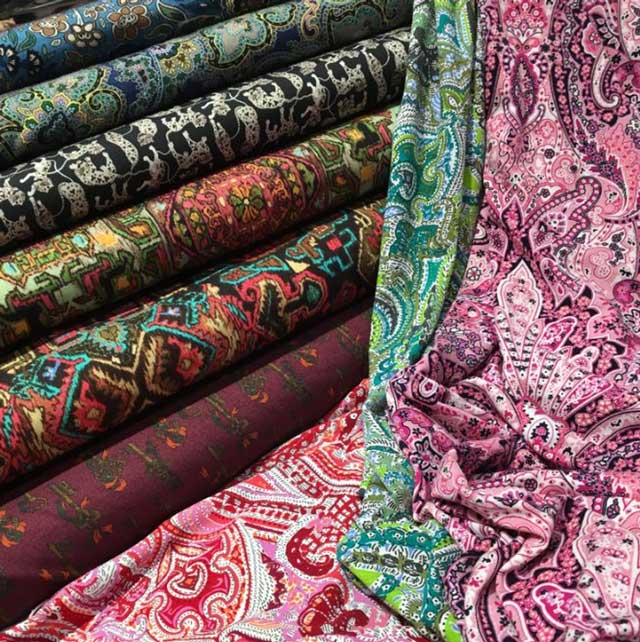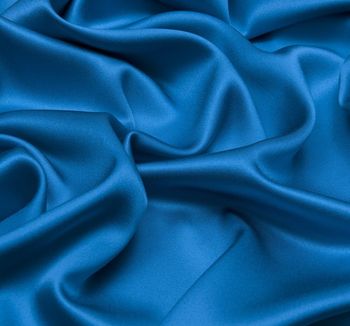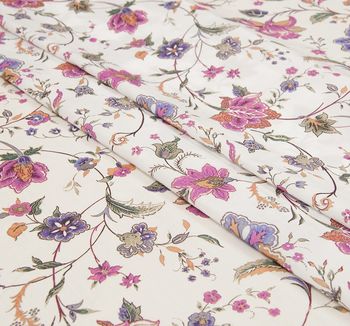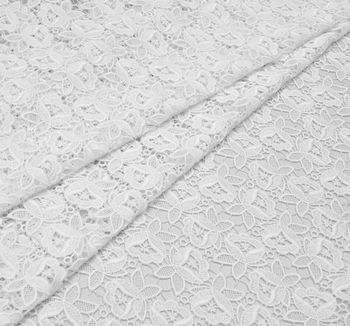Silk is a timelessly trendy natural fabric woven from the cocoons of silk worms. The world’s most famous fashion brands regularly apply it for various men’s and women’s outfits earning the admiration of the audience.
Viscose Fabric Guide
Viscose fabric is the type of cloth based on artificially obtained fibres of cellulose origin. Depending on the technology it has been treated with, this fabric can be similar to silk, wool, cotton or linen.
Over more than one hundred years since its invention, viscose has been used for fashion clothing, home textile, footwear, and even car tires. While such versatility has made it very popular, viscose fabric is still perceived as not entirely natural, and that is why some people prefer not to wear it. Well, today, it’s the time to dot all the i's and cross all the t’s. Should you keep clear of this fabric or give it a second chance? This article will help you make up your mind!
Viscose Fabric Collection at Tissura
How Is Viscose Made?
Viscose is produced of the wood pulp of trees that grow and regenerate fast enough to consider viscose production as sustainable. The used species are eucalyptus, beech, pine, bamboo, sugar cane and soy. What are the production stages?
- Wood pulp collection.
- The alcaline wood pulp substance is then dissolved in the chemical solution of carbon disulfide to obtain cellulose xanthate.
- Cellulose xanthate is dissolved in an aqueous solution of caustic soda (at t 10-12 ° C) and a spinning solution is obtained — viscose. Usually, viscose used for spinning fibers contains 6.5-9% cellulose (in the form of its xanthate), 6.5-7.5% sodium hydroxide and about 2-2.5% bound sulfur; the rest is water and a small amount of impurities.
- Wetting the filament by forcing viscose through spinnerets into an acid bath to regenerate cellulose.
- Finishing and drying.
In some cases, various substances are added to viscose, like matting agents (to eliminate glass gloss in the finished fiber), dyes (for uniform and stable coloration of finished products), modifiers and surfactants (for the production of high-strength and structurally homogeneous fibers).
Viscose Properties
The physical and mechanical properties of viscose largely depend on the way a fibre is shaped. The fabric can be glossy or matt, lightweight or heavy, textured or smooth. 100% viscose looks similar to silk — it is semitransparent and glossy. To reduce the natural gloss, special matting chemicals are applied.
The fabric has lots of pros:
- Soft and nice to the touch
- Warm in winter and cool in summer
- Well-drapable
- Antistatic
- Easily dyeable
- The dyeing technology allows for maximum colour penetration into the fibres
- If correctly dyed, it doesn’t fade in the sun
- Lighter than cotton
- It absorbs twice more moisture than cotton
- Highly durable when dry
- Good at retaining body heat
- Needs no special recycling
- Non-allergenic
- Hygienic
There are fewer cons than pros, however, you should take them all into account:
- This fabric is prone to wrinkling
- It may shrink in size and deform during the washing process
- Susceptible to mildew
- It wears out affected by water, high temperature or ultraviolet radiation, especially if these factors affect simultaneously. That is why these fabrics are often infused with chemical antioxidants and filters protecting viscose fibres from ultraviolet as early as on the production stage.

Viscose Types, Their Features, and Application
The technological process opens up much space for numerous variations of viscose fibres.
| Viscose type | Features | Application |
|---|---|---|
|
100% natural viscose |
What's great:
What's not that great:
|
Blouses, shirts, skirts, trousers, baby clothing |
|
Bamboo |
|
Summer shirts and dresses |
|
Modal™/ Polynosic |
|
Underwear, sleepwear |
|
Micromodal |
|
Lingerie, sleepwear, towels, sportswear |
|
Lyocell / Tencel™ |
What's great:
What's not that great:
|
Staple fibres are used for denim, chino, underwear, casual wear and towels. Filament fibres are used for various women’s clothing and men’s dress shirts |
|
Viscose jersey |
stretchy |
Sweaters, T-shirts, jersey for kids |
|
Viscose with elastane |
elastic, thus not limiting your movements |
Bodycon dresses, skirts, shirts, trousers |
|
Slinky viscose |
Flowy |
Flowy and bodycon dresses, skirts and blouses |
|
Cupro |
What's great:
What's not that great:
|
Lining |
|
Cotton and viscose |
What's great:
What's not that great:
|
Dresses, jackets, skirts, tops, trousers |
|
Viscose staple |
|
Shirts, blouses, long skirts and romantic dresses |
|
Lining viscose |
What's great:
Controversial:
|
Outerwear, hats |
|
Quilted viscose |
Warm and comfy |
Button-down shirts, dresses, leggings, and jackets |
Viscose vs. Cotton vs. Silk — What’s the Difference?
The fashionistas who are not much keen on fabrics can stumble upon not that easy choice selecting between the fabrics with a similar print motif, yet varying by the fibre sort. What should you take into account before giving your favour to any of them?
Viscose. Even though technically it is neither a natural nor synthetic fibre, that’s still the option offering lots of awesome features. Soft, airy, drapable, featuring a distinctive sheen, it feels natural against your skin. Just avoid exposing it to water!
Cotton. Soft, breathable, durable, non-allergic and coming in lots of weave types, this fabric is known to enjoy the highest popularity all over the world. If you want it especially fine and silky smooth, go for long and extra-long staple sorts, such as Egyptian Giza 45, 87, 88, Sea Island or Supima.
Silk. The indirect evidence of its amazing features can well be the fact that the production technology has been kept in a strict secret for 1,000 years and cost the lives of many Chinese who attempted to reveal it to other nations. This unique fibre is renowned for its outstanding thermal regulation, heavenly feel against your skin, antistatic properties, and strength. Offered in lots of weave types, silk often becomes a go-to option for skirts, blouses, tunics, as well as evening or prom dresses.
Viscose Trends 2018
What type of viscose appears to be the hot trend in 2018? This season, fashionistas can opt for viscose clothing with a slight glance and wicker texture to create a summer dress or wide trousers.
.jpg)
To imagine the dress concept you can take as an example, check out the body-skimming viscose dress by Jill Stuart.
Men won't go wrong with the viscose & silk blend lightweight trousers and short-sleeved shirts in vibrant colours, such as orange, royal blue, green or yellow.
Tissura Collection
Viscose fabrics at Tissura contain cotton and various man-made fibres that complement basic viscose features. What sort of viscose textiles can you find at our store?
- Velvet
- Stretch jersey knit
- Viscose jersey knit
- Double jersey knit
You can select them by design across solid, floral, animal, ornamental, Paisley, botanical and geometric patterns. All viscose fabrics at Tissura meet the utmost European quality standards, as we partner with exclusively renowned and trustworthy brands from Italy (Carnet, Binda, Marioboselli Jersey), France (Guigou), Great Britain (Liberty), and Switzerland (Jakob Schlaepfer).
See some of the most impressive viscose fabric designs in this selection:
Stretch jersey knit viscose fabric, 90 € (110 US$) per one running metre
Velvet fabric, 88 € (108 US$) per one running metre
Viscose and cotton jacquard fabric, 89 € (109 US$) per one running metre
Stretch jersey knit fabric, 47 € (58 US$) per one running metre
How to stay cool on a hot summer day? Wear fabrics built for the heat. Cotton, linen, viscose, silk – there are dozens of summer-friendly materials you can choose for your wardrobe. The best fabric to opt for when the temperature rises should be breathable and comfortable.
The wedding dress is one of the most important clothing items a woman gets to choose in her lifetime. It can be made of silk or cotton, lace or tulle, be strewn with sequins or embroidered with beads.
.jpg)
.jpg)
.jpg)
.jpg)


